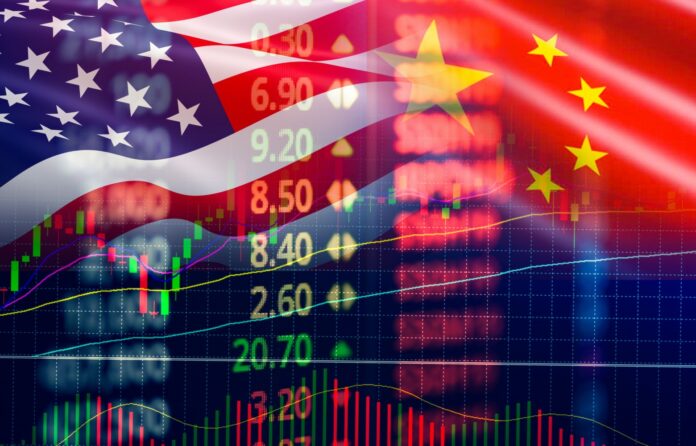The report on American spending, which contained the Federal Reserve’s (Fed) preferred measure of inflation, offered no surprises. The base indicator, as expected, fell while the fundamental one increased. The month-to-month dynamics decreased. The US dollar slightly gained value after these data. The Purchasing Managers Index (PMI) from China presented a mixed picture of the economy. Meanwhile, US politicians successfully avoided a government shutdown.
The dollar reacted moderately to Friday’s data, gaining some strength. The EURUSD pair ended Friday’s trading around the opening level, hence, there was no breakthrough visible on the chart of the main currency pair. Wall Street indices declined, except for the tech benchmark which finally closed the day slightly up (0.1%). The market reaction indicates that investors are increasingly convinced that interest rates in the US will remain high for a bit longer and the potential date of the first cut is getting further away.
The weaker month-to-month dynamics of the PCE core indicator (0.1%) may suggest that the Fed will not increase rates this year. On the other hand, the year-to-year indicator remains at a high level of 3.9%. Large revisions of income and expenditure mean that households have more savings than thought. It is assumed that during the pandemic, citizens simply amassed more than estimated and their level has been reduced less than anticipated in the following months. We’re talking about over $700 billion. This suggests that consumer spending will remain high, even if economic slowdown enters a somewhat more advanced phase.
The feared US government shutdown, initially due October 1, is now off the table as Congress has passed a last-minute interim funding. However, this will only last until November 17. As a result, this problem will resurface in a few weeks. Positions in Congress on the level of government spending and issues such as aid for Ukraine and border security are still strongly divergent. On Wall Street, we may see a kind of “relief rally” today, but it’s unlikely to be spectacular.
Over the weekend, we learned the PMI data for China. The official index for the industry rose in September to 50.2 and, for the first time since March, it was above the neutral 50-point level. This likely reflects the fact that the recent stimulus measures, although patchy and modest, are supporting the economy. However, details suggest that most of the improvement was concentrated among large firms, while the activity of medium and small businesses remained in the “shrinking territory”. This is reflected in the weaker than expected Caixin industrial PMI, which fell to 50.6 in September from 51.0 in August. Furthermore, the official non-manufacturing PMI rose in September to 51.7 from 51.0 in August. Meanwhile, the Caixin services PMI unexpectedly fell to 50.2 from 51.8 previously. Mixed readings suggest that the stabilization of growth in services is not yet solid.
Meanwhile, turmoil in the property market will still weigh on the Chinese economy. The troubles of the most indebted developer in China have deepened in recent weeks and there is now a greater risk that the company could be forced to liquidate in the coming months. These failures may undo efforts by Chinese authorities to revive homebuyers’ sentiments with a range of measures, including lowering current mortgage rates and easing mortgage prepayments and home purchase restrictions. Investors are fearful of risks associated with other developers and the banking system.
Author: Łukasz Zembik, Oanda TMS Brokers.

















